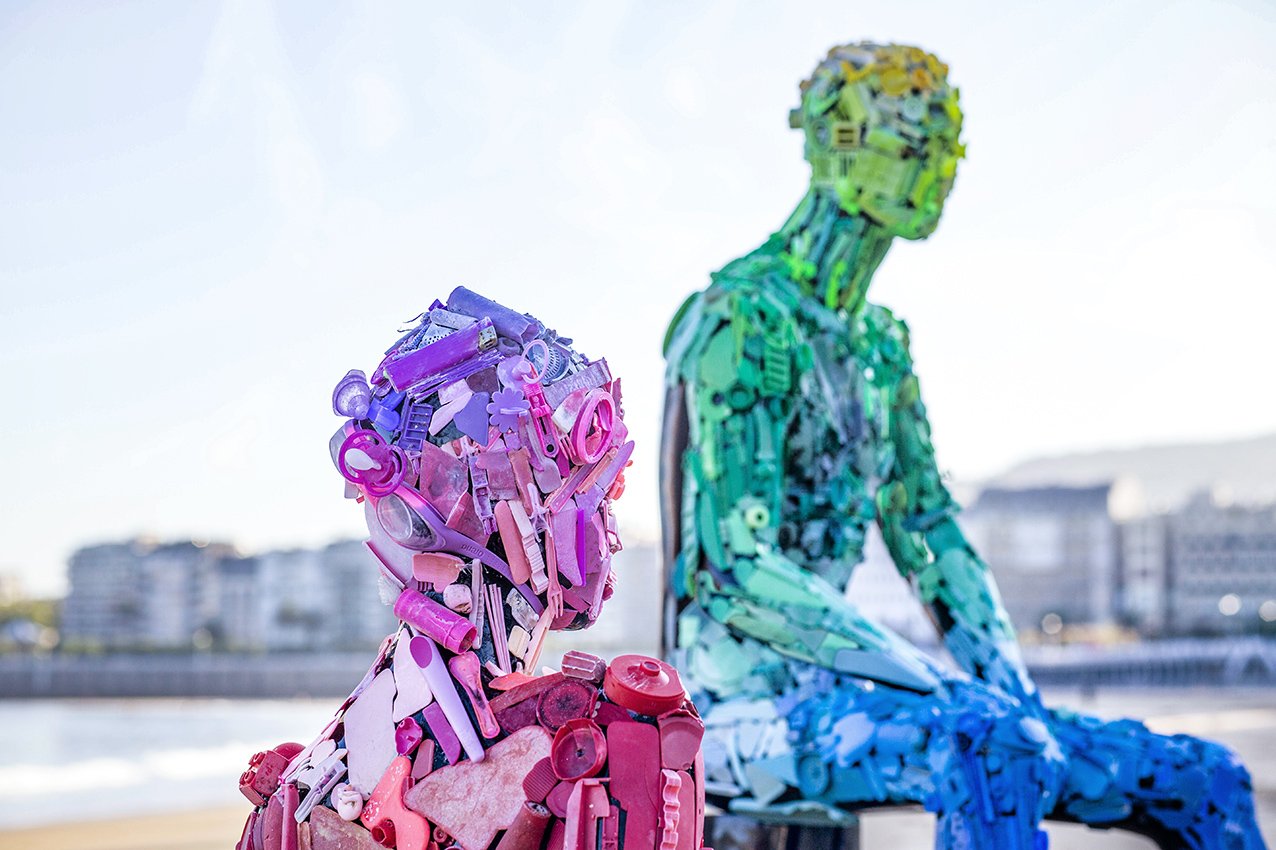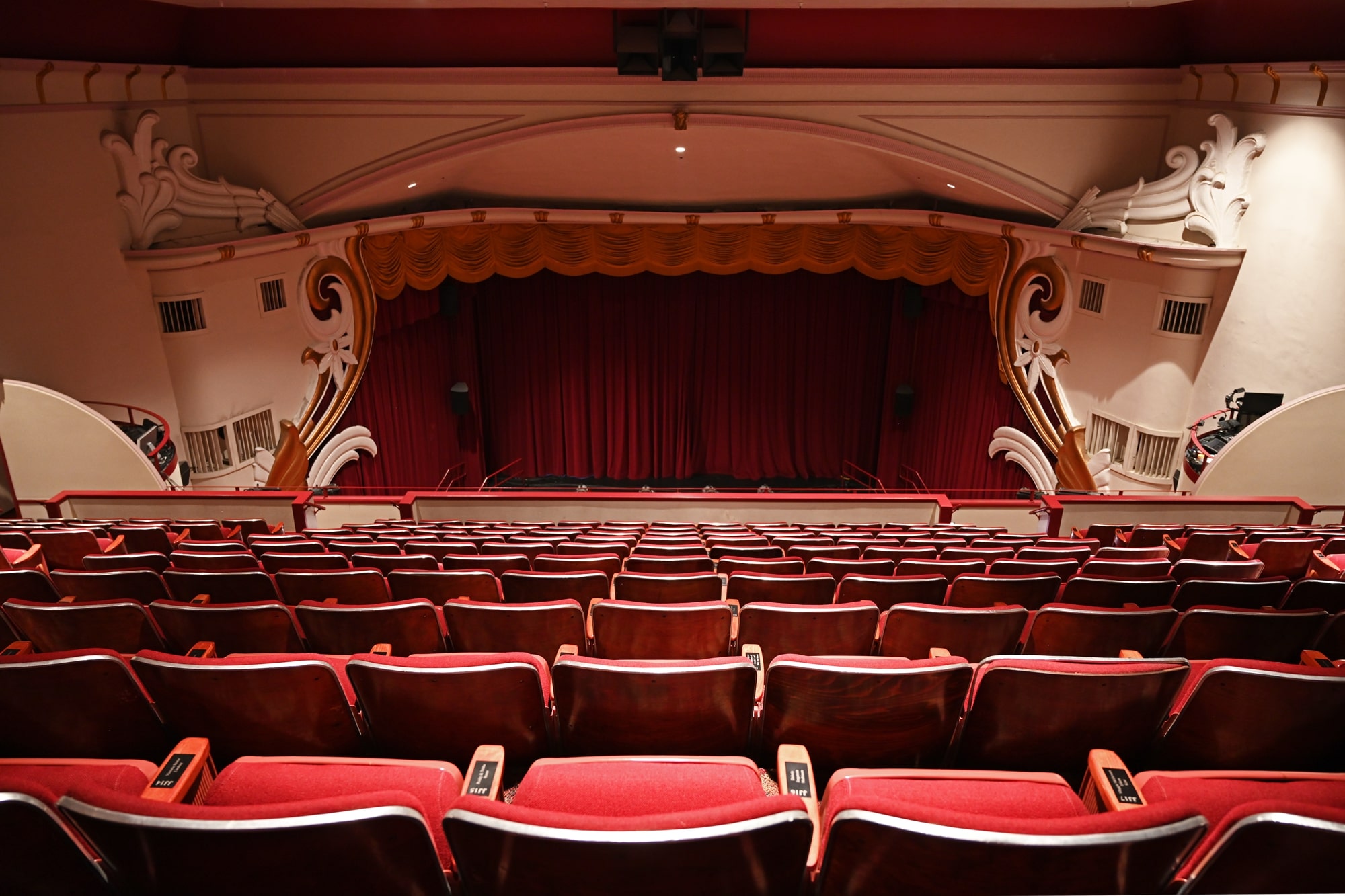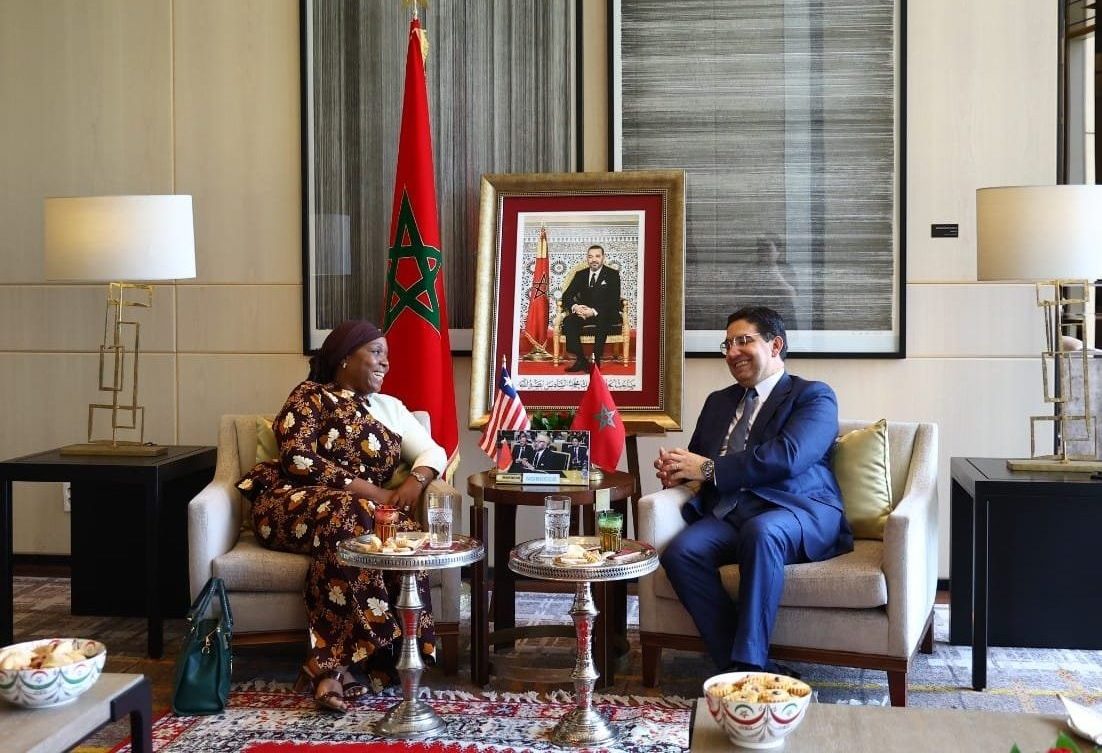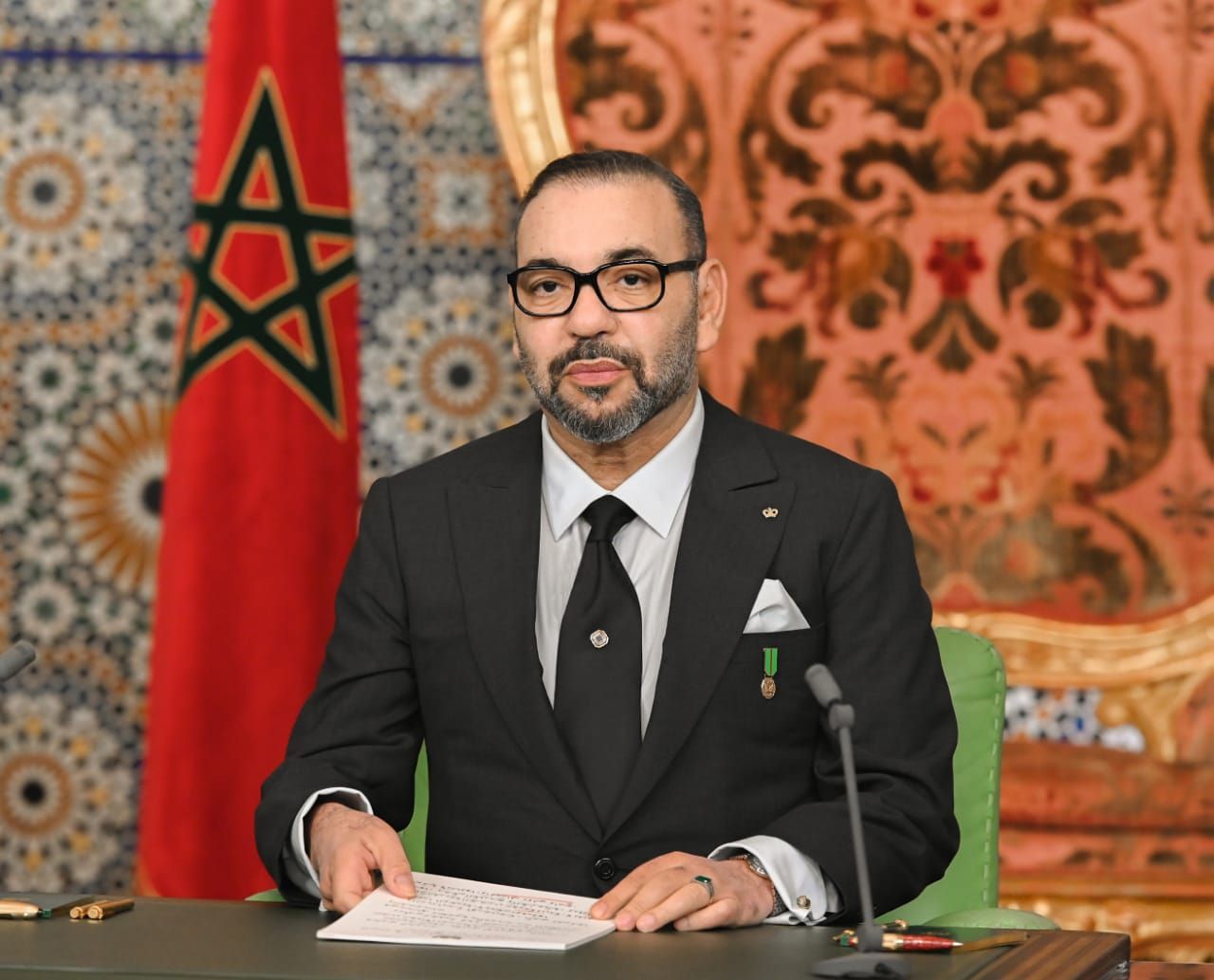Arts and Culture
Reading the experience of the plastic artist Abdelkarim Elazhar: Works that reflect human loss
Published
3 years agoon

This is a preliminary “reading” in the most important phases of creativity that characterized (Thematically) the experience of the artist Abdelkarim Elazhar, starting from the human being/body phase, passing through the phase of arrows, numbers and windows, the phase of shelves, and ending (then in 1998) with the phase of adjacent eyes.
1-The human being/body phase

throughout history, painters and sculptors have dealt with the human being as an object of their art, with his/her various symbols and in his/her different manifestations, as the human being was associated in most cases of expression with the harsh conditions experienced by mankind (pollution – destruction – exploitation – extermination – torture – diseases – endurance…). In the paintings of the Azemmouri artist Abdelkarim Elazhar, this topic (The human being/body) was associated with the daily suffering and worries of the Moroccan people. His paintings are the artistic embodiment of this reality with its events, issues and human dimensions, which is in line with the artist’s attitudes and his subjective and objective vision of the world.
It appears, then, in the paintings of Elazhar, that the human being/body, represented in the form of the weak, thin, naked and abstract person is a person who is obsessed with escaping and searching for outlets to get rid of the burden of the situations of distress imposed on him by the hardship of life. That is why we find that most of Abdelkarim Elazhar’s paintings (especially in the Casablanca phase 87 as his prefers to call it) include nearly equal squares as symbolic elements referring to the windows as outlets.
On the technical level, the artist Abdelkarim Elazhar remained faithful to his black and dark inks as a special way to highlight the contrast between two neutral colors, black and white and their gradations, and as an expressive means governed by some usages stylized by a kind of “incompleteness”. This technique developed (in the artist’s work) until It became mixed with other liquids, most of which are natural and traditional), leaving stains and traces of color, making the artistic work more expressive, and making thus the scene complete by the synthesis between the ancient and the modern, between pure ink and ink mixed (or accompanied) with other liquids, and with other colors.
2-The language of arrows and numbers

It is obvious that each of us stores in his memory multiple numbers that represent some specific events and dates, starting with the date of birth, the house number, the phone number, the national identity card number, and the job-related numbers, passing through the amount of debts and daily expenses, as well as our arrangements within the family, appointments, travel schedules and shoe size numbers…etc. The aim is to speak in a numbered language (the language of numbers). Perhaps, by using the same logic, some of the codes of Abdel Karim Al-Azhar’s paintings may become clear, which, in addition to several symbolic numbers, contain arrows, symbols and signs that derive their reference from the collective popular memory, which helps the reader to read them (or articulate them) in the same way we read the stories in comic strips because of their hierarchy (in the preferred language of Al-Azhar).
While the signs and symbols are semiotic systems that make up the universe as a whole, their expression in the painting (according to the artist Abdelkarim Elazhar) takes form through numbers and arrows (as special vocabulary) according to a perception that combines the three times (past, present and future) and the painting represents for him and is perceived by him as a space where connotations and meanings are scattered as if they came from another time.
The expressive style (arrowed and numbered) of the artist Abdelkarim Elazhar is governed by a symbolic “dynamic” system that often settles in the end on a thematic composition that constitutes a declarative harmony between its fixed and moving components. The painting according to this perspective is a colorful world, full of signs and symbols. It looks like, to a large extent, childhood tales, the tales that invite us to rebuild and reconstruct them because they are loaded with many symbolic meanings and significations.
3- Forgotten files on bookshelves

After the journey of the artist Abdelkarim Elazhar from Casablanca to his hometown of Azemmour, the representation of the human being shifted in his paintings from numbers, arrows and symbols to settle in the form of forgotten files, bundles of files, and strata of forgotten papers inside a forgotten bookcase. This new symbolic configuration of the human being in the way presented by the artist is an attempt at sensitizing humanity to the existence of many forgotten human bodies, or rather, erased from existence by oblivion. It is a semiotic language with multiple overtones, in which “man” oscillates between the authority of the signifier and the signified.
The human being is present in the paintings of Elazhar that represent this phase of his artistic production. He/she is inside the shelves of a bookcase, on which dust has accumulated, the dust of the treacherous time. In order for the artist to prove to us the position of the human being within the circle of time (the time of siege, as he put it), he usually uses symbolic elements such as alarm clocks, the hands of the clock and the vanishing numbers. and as an attempt from him (also) to highlight his struggle (conflict) (the struggle of his human being) with the same time, or time/ self, he presents it in two categories: the human/origin and the developed human (or the human who lives on nature and the human who lives on culture in the words of Levi Strauss). That is why the bookcase is present in the last paintings of Al-Azhar, as symbolic of space and place, within which this eternal struggle takes place. Al-Azhar comments on the appearance of the human being in some of his works, trapped between the concept of time and place:
“My first works are an attempt to embody the human being trapped in the space inside the city with its monotonous rhythms, and later I discovered that the siege does not take place only in terms of space, but also could be apprehended in terms of time. From this perspective, the symbols indicating time leaked into my works. and like space, time can be viewed as siege, a time with a monotonous rhythm, because if space is the field of the siege of the human being and the limitation of his/her freedom, then time plays the same role. The aim of such paintings is to give voice to this human being put under the siege of time and space, and his/her yearning for the possibility of freedom and breaking free from these chains”.
4-Paintings that can see and hear with multiple eyes

When President Stalin felt the Nazi threat against his people, he and the Minister of Culture at the time, could do nothing in response to this threat but to resort to a great artist loved by the Russian public, the great film director Sergei Eisenstein, asking him to make a film capable of sensitizing the people to Stalin’s anxiety and fear for them. Of course, Eisenstein (the pioneer of Russian cinema in the twenties) did what was expected of him, as he made a wonderful film in three parts entitled: “Ivan the Terrible”, with wonderful effect music by Prokofiev. Ivan was the first Tsar of Russia (1547) known for his love for his country and his devotion to serve it. What is of importance to us in this story is the decor of this movie, which includes a large eye, under which there is a Russian citizen sitting with his head sloping on an old wooden chair. The eye symbolizes the conscience and the sense of responsibility, meaning as he said: “God is watching us”.
The presence of the eye in the recent works of the artist Abdelkarim Elazhar shows his preoccupation with humanitarian issues that are of concern to him (and to us) and this has grown inside him without being separated from his being. That is why the eye stands out and appears as an eyewitness and as a private observer (in the words of the late caricaturist Naji Al-Ali).
In this symbolic expressive framework (where the eye is centerstage), the paintings of the artist Abdelkarim Elazhar appear as a product of a subjective desire driven by (hidden) feelings and senses. It usually turns into an important source of inspiration and drawing.
The painting method, which is parallel in nature to the peculiarities of symbolic plastic expression, endows and enriches the paintings of the artist Abdelkarim Elazhar with a graphic character – sometimes by the manner of engraving, he suggests the changing mood of the artist and his conflicting desires on a small scale. This expressive diversity seems to be recording static inner visions that represent fixed elements derived from reality, the reality of the artist. The confirmation of these elements guarantees a minimum of continuity within the distance between the studying eye/viewer and the studied eye/painting, without ruling out the possible presence of a third eye that is productive and takes the position of a spectator, in this case (on his own work), and it is the artist’s eye.
Article by: El Haissan Ibrahim
Translated by: Mohamed Mifdal Associate Professor at Chouaib Doukkali University.
You may like
-


HM King Mohammed VI Affirms Morocco, Pioneering Role in Establishing International Mechanisms on Inter-Civilizational Dialogue, Countering Terrorism
-


HRH Princess Lalla Hasnaa Holds Talks with HSH Prince Albert II of Monaco
-


American Analyst Samuel Millner Highlights HM King Mohammed VI’s Irreversible Commitment to Pluralism
-


Soufiane El Bakkali Named Africa’s 2022 Best Male Athlete
-


Casablanca to Host 13th Edition of Arab Theater Festival
-


Morocco, UAE Discuss COP28 Preparations
















